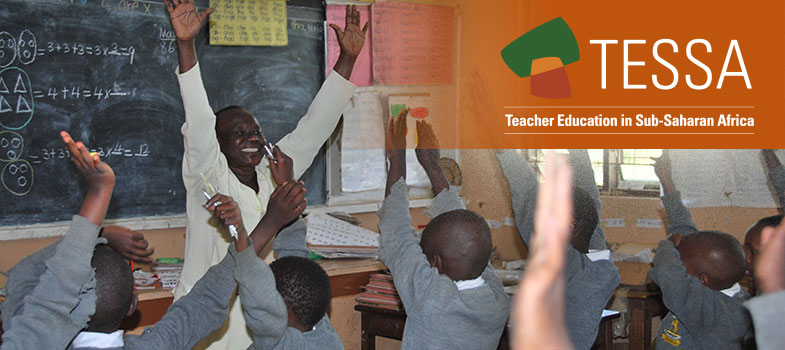1 Where can TESSA fit into your curriculum?
TESSA materials aim to enhance and improve teaching. They focus on developing teachers’ classroom practice in the key curriculum areas of literacy, numeracy, science, social studies/ arts, and life skills. The TESSA materials are all ‘Open Educational Resources’ (OERs), this means these materials can be freely downloaded, adapted, translated and integrated with other materials at no cost.
There are seventy-five sections organised in three modules in each of the five module areas shown in Table 1 below. More detail on the content of each module is found on the TESSA website by clicking on ‘Getting Started’ in the left-hand navigation bar, and then clicking on ‘Curriculum Overview’.
‘Key Resources’ can also be found on the TESSA website under your country area. These include ideas for teaching techniques such as brainstorming as well as advice on how to cope with specific issues like large classes.
| Module area | Module 1 | Module 2 | Module 3 |
|---|---|---|---|
| Literacy | Reading and writing for a range of purposes | Using community voices in the classroom | Promoting communication in an additional language |
| Numeracy | Investigating number and pattern | Exploring shape and space | Investigating measurement and data handling |
| Science | Looking at life | Investigating materials | Energy and movement |
| Social Studies and the arts | Developing an understanding of place | Investigating history | Looking at the arts |
| Life skills | Personal development | Exploring social development | Community issues and citizenship |
Before starting to use the TESSA materials we suggest you print out one section to look at whilst reading this explanation.
You will see that a section contains:
- learning outcomes (these are for you, the teacher, and show the skills and knowledge you are expected to develop during these activities)
- activities (for you to do in the classroom with your pupils)
- case studies (describing how other teachers have done this activity or a similar activity)
- resources (these are to help you use the activities with your pupils)
TESSA Snapshot: TESSA literacy module use in Kenya
|
Mrs Jenestar Wanjiru, an upper primary school teacher in Kenya, realised that her learners were not performing well in creative writing. ‘After going through the TESSA Literacy Module 1 Section 5: Ways of Becoming a Critical Reader and Writer, I found a suitable solution and tried it. It’s working.’ |
The following steps are recommended for selecting and preparing to use TESSA activities in the curriculum:
Select an appropriate theme and topic from your curriculum/scheme of work for the next few weeks – this might be one which you find particularly challenging to teach, one which your learners have struggled with or a new way of teaching that you want to try out. (Some important active teaching and learning methods and skills are given on p. 12).
Locate and review relevant TESSA materials to identify suitable sections which match your chosen theme, topic or skill. You might find it helpful to look at the TESSA Curriculum Summaries [Tip: hold Ctrl and click a link to open it in a new tab. (Hide tip)] .
Ask yourself what you as a teacher have planned to achieve through teaching your theme and topic.
Read the TESSA activities and related case studies and resources.
Select the relevant TESSA activities or case studies that match what you planned to achieve. Find the resources you need (Section 2, "How can you prepare TESSA materials for your school context?").
Adapt the TESSA activities to suit your pupils and your surroundings (Section 3, "How can you teach using the TESSA materials?").
Some of the things you will need to consider are:
- the prior knowledge and experiences of your pupils
- the number of pupils in your class
- the availability of equipment and the length of your lesson
- the language level of your pupils.
- Develop your lesson accordingly including the TESSA activities and remember to include all the vital items of a lesson plan (Section 4, "How can you teach using the TESSA materials?").
 |
Contents



